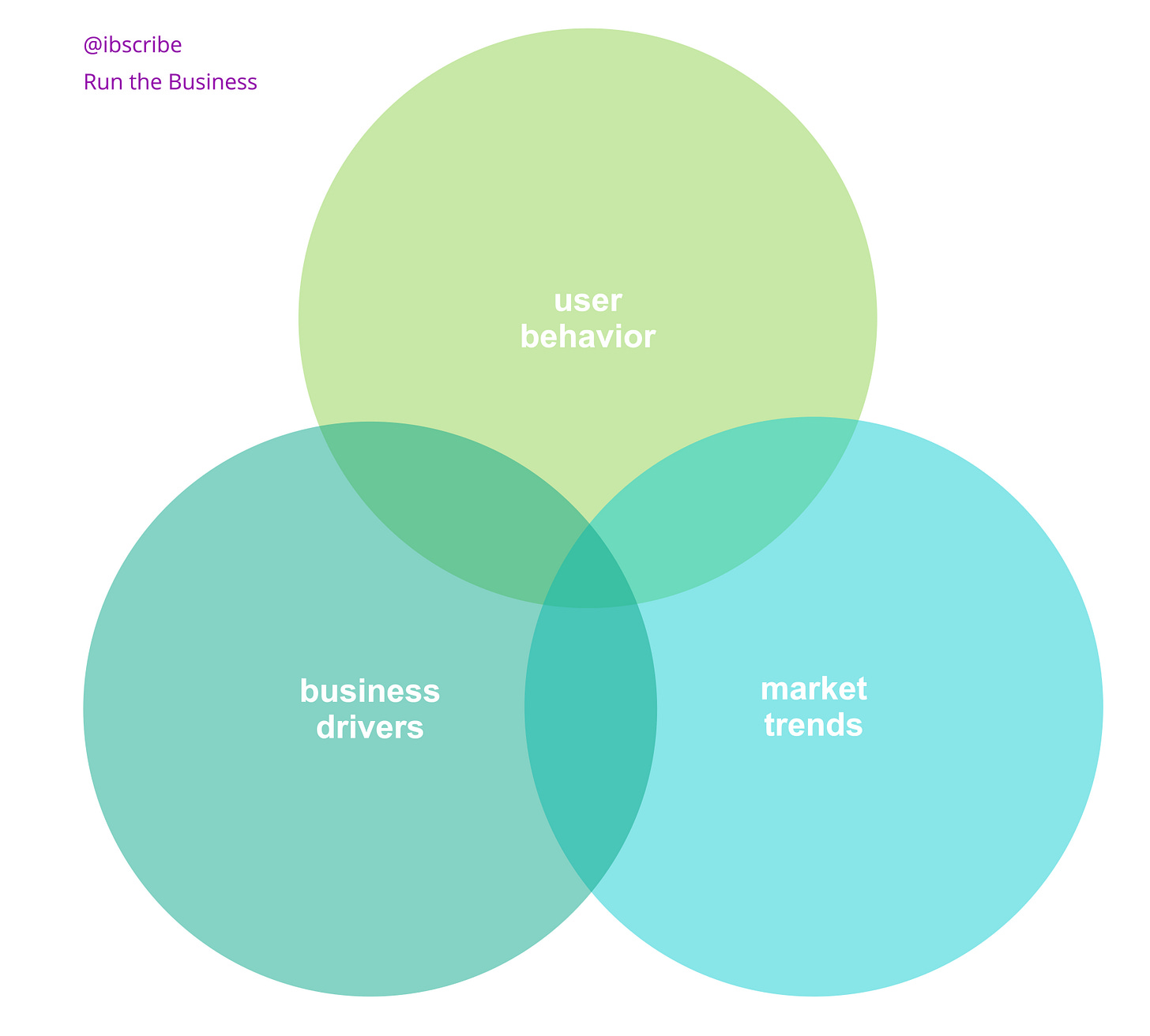Imposter Syndrome / Product Vision
"Excellence is mundane. Superlative performance is really a confluence of dozens of small skills or activities, each one learned or stumbled upon, which have been carefully drilled into habit and then are fitted together in a synthesized whole. There is nothing extraordinary or superhuman in any one of those actions; only the fact that they are done consistently and correctly, and all together, produce excellence."
Today’s post is a bit backwards, in that I shared a quick thought on LinkedIn earlier this week that seemed to resonate with a lot of people, so I’m sharing some longer form thoughts here (usually I share nuggets from my newsletter articles on LinkedIn after publishing).
We all suffer from imposter syndrome at work - one of the biggest instances for me when switching into PM was "product vision" - I had a hard time keeping up with folks who would just rapid-fire toss out product ideas and debate pros/cons in a brainstorming session. (I much prefer to spend some time forming my thoughts, writing them down, and iterating on my point of view vs jumping in off-the-cuff.)
The biggest learning for me on this front has been realizing that folks with "instincts" are just keen observers of user behavior + business drivers + market trends, and that is a skill that can be acquired.
User Behavior
I’ve shared before that products are workflows, and the biggest reason to observe and absorb user behavior is to comprehend the workflow as it exists (vs how your product would like it to exist). Some techniques for wrapping your head around user behavior:
use the product!
watch users use the product live / recorded (qual)
analyze user behavior with data science lens (quant)
read feature requests
Business Drivers
Software purchases are not solely determined by user behavior - much of buyer motivation comes from trying to solve business problems and drive outcomes. The best way I’ve found to understand purchase behavior is to talk to the folks involved in the sales / success cycle.
talk to customers
talk to prospects
talk to GTM folks who interact with customers (sales, success, consulting)
Market Trends
The hardest part of crafting a product vision is pinning down what emerging trends are here to stay vs flash-in-the-pan. I find blending long-term forecasts with short-term results is a good method for separating signal from noise.
read analyst reports
read win / loss reports
read churn forecasts
read your competition's messaging
If you're trying to hone your product judgement, I recommend you just do ANY 1 of the above activities for 30 minutes a day, and you'd be surprised where you are in a week, a month, a quarter, a year.
I’d love to hear from readers about their attempts at building product instincts - please chime in via comments👇. And if you enjoyed this post, please consider subscribing.
further reading / references
I’ve shared thoughts on product instinct and product judgement before
The quote above is from The Mundanity of Excellence via the Brain Food newsletter
if you want to get into the habit of iterating on product ideas, I recommend using a spark file for hunch tracking
some thoughts on why it’s important to think of products as workflows
one of the highest leverage ways to learn user behavior is CX loops
if you’re new to PM-ing and stressed about your lack of product vision, take a look at where I put forecasting the market on my career ladder
once you arrive at an insight, it’s easy to find examples of multiple products leveraging (intentionally or accidentally) one idea - see Skip Step SaaS
one of the reasons I write this newsletter is to get product community input to help refine my instincts and ideas (see Enterprise SaaS Truisms), so don’t be afraid to put your vision out there for others to comment on - you’ll learn!
childish drawing / interpretation





